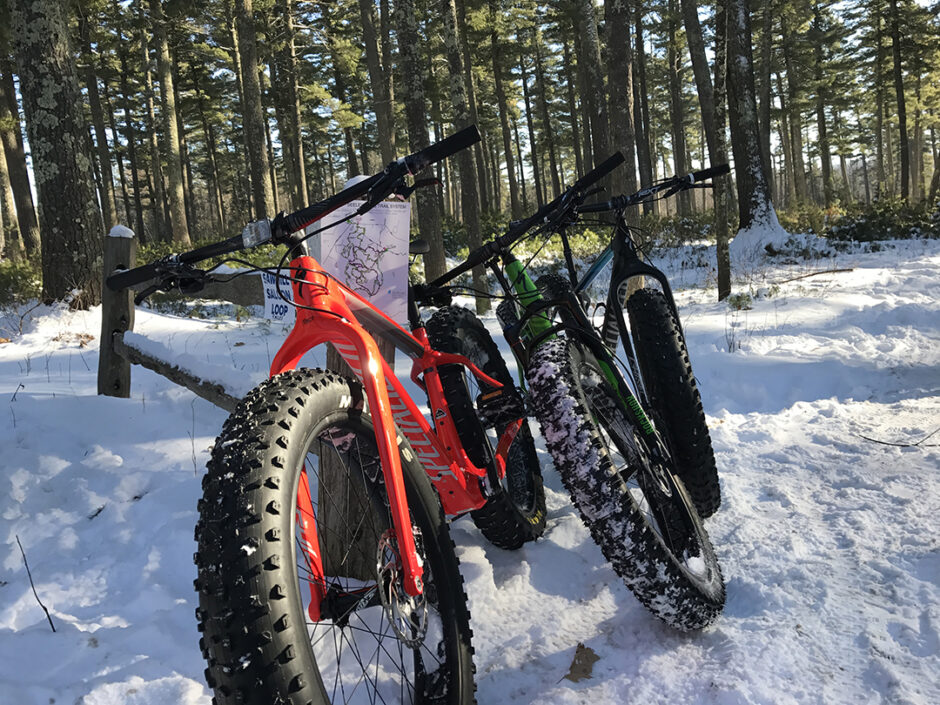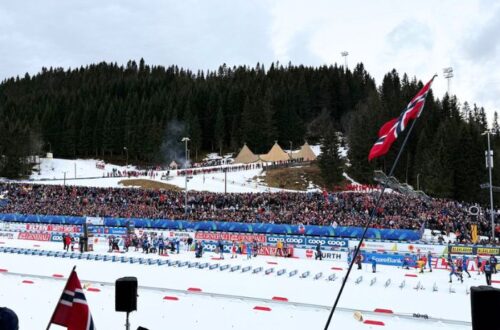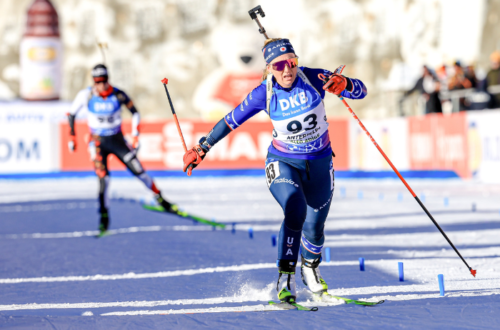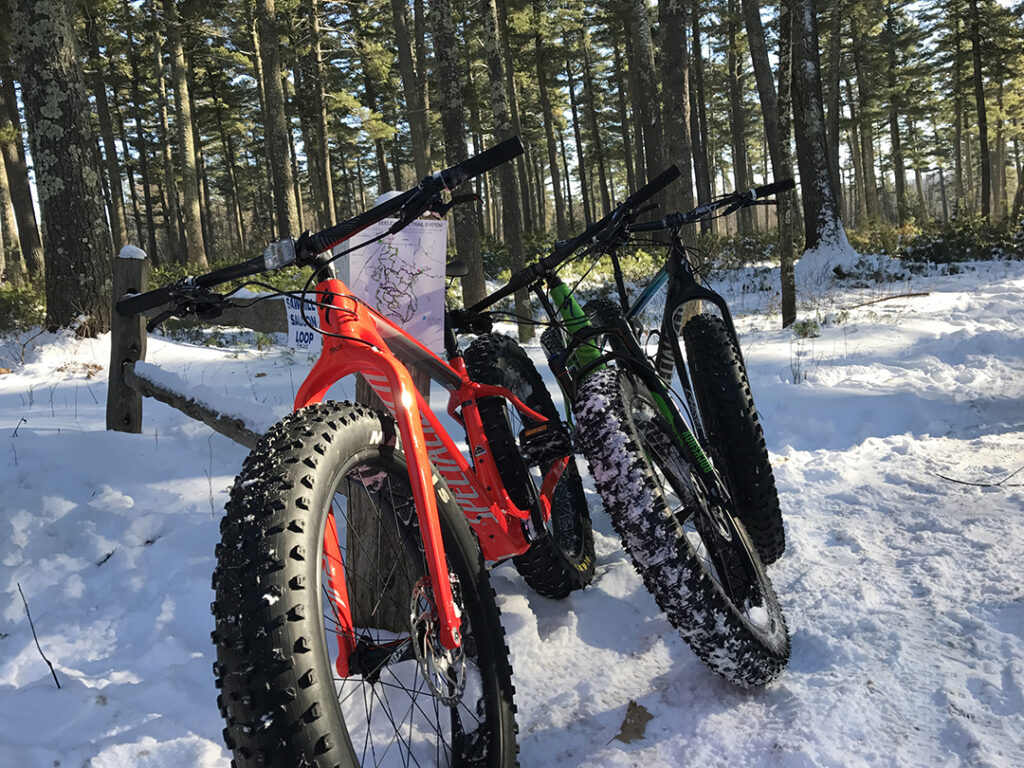
Wow! Look at that… we’re a little over a decade into mainstream fat biking! Let’s take a look back at the remarkable changes along the way.
Grooming – holy cow! We started with snow-shoed trails and skinny ribbons of packed snow a full 18” wide if we were lucky. Human-shaped craters in the snow every 50 yards or so told a story of sketchy bike handling. Any slight uphill became an inevitable hike-a-bike through the snow for all but the most skilled riders. A hard left or right-hand turn on a downhill became a repeat yard sale of fat bikes and snow-encrusted bikers, usually laughing as they shook snow out of their helmets. Finding a fat bike… now that was a real challenge, but that would change.
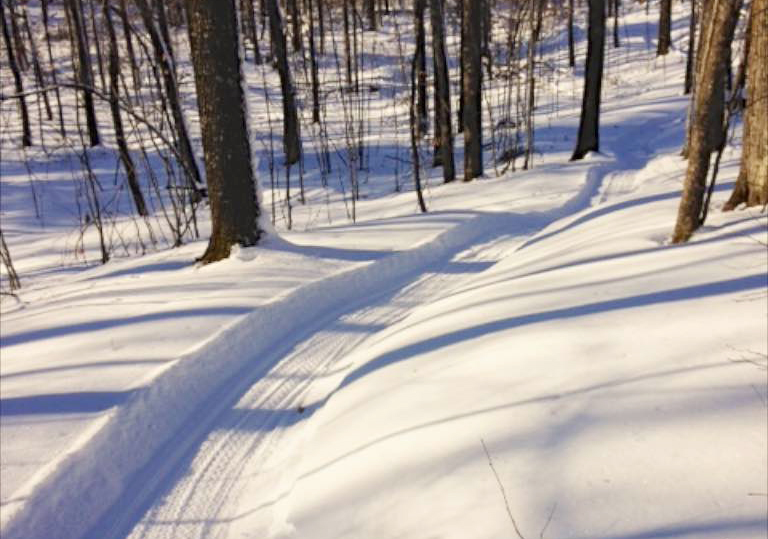
Very quickly, the newly addicted fat bikers organized. They figured out how to equip old snowmobiles with various makeshift drags through the narrow twists and turns of the Northwoods, laying down well-packed packed trails.
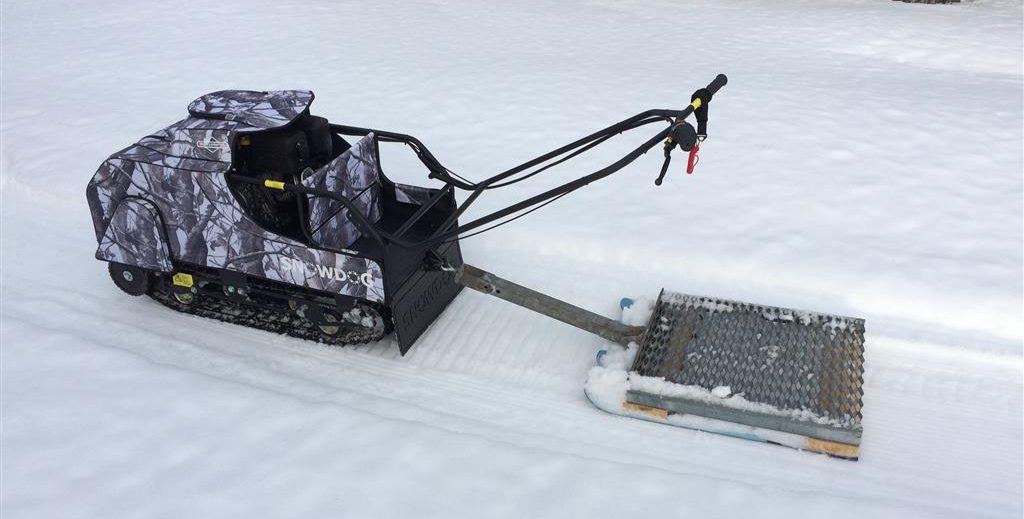
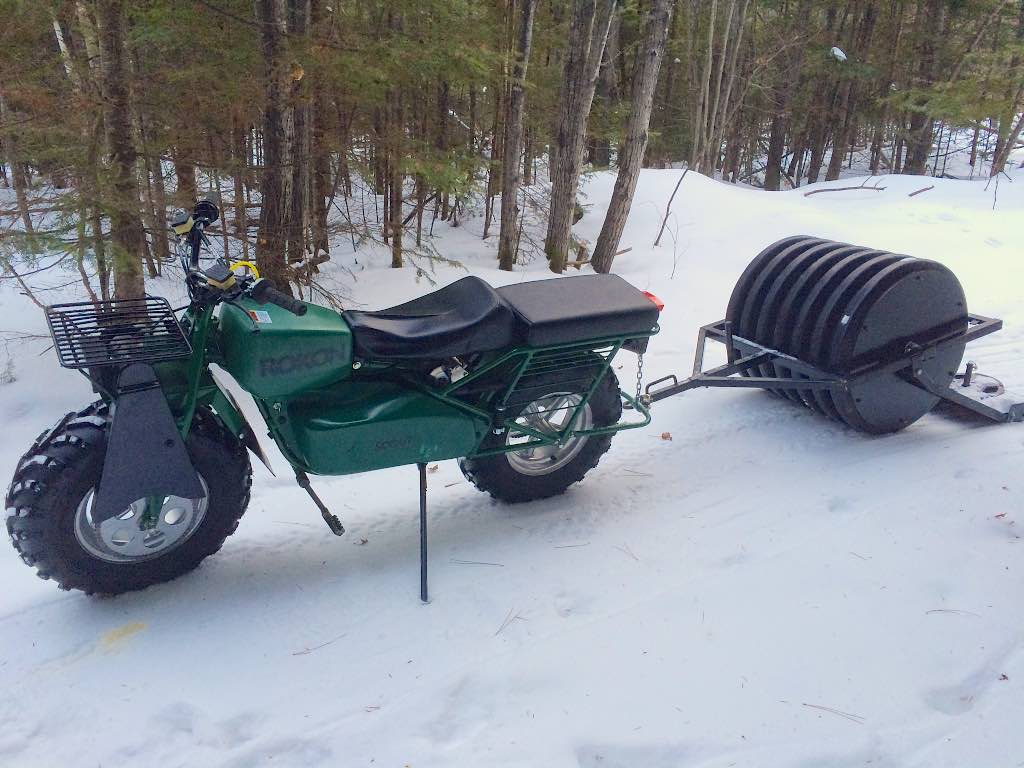
Some enterprising groomers jumped aboard Rokon 2-wheel-drive motorcycles while others looked to the opposite side of the globe (literally) for an unusual machine called the Snow Dog. From Russia, Snow Dogs were traditionally used as utility wilderness transportation for Siberian trappers and others in remote areas. With these creative implements, fat bikers could now enjoy a well-packed trail 20” or even 30” wide.
Human craters were fewer. Uphills were now ridable. And laughter and smiles are more abundant than ever. Fat bikes became simpler & more capable and were now easier to find, but often quite expensive.
Fast forward to 2023. Fat bikes are abundant and quite affordable. Wheels and tires are bigger. Carbide studs make for good traction and keep the rubber side down when things get icy. Special helmets, pogies, and warm boots all make the fat biking experience more comfortable than ever before.
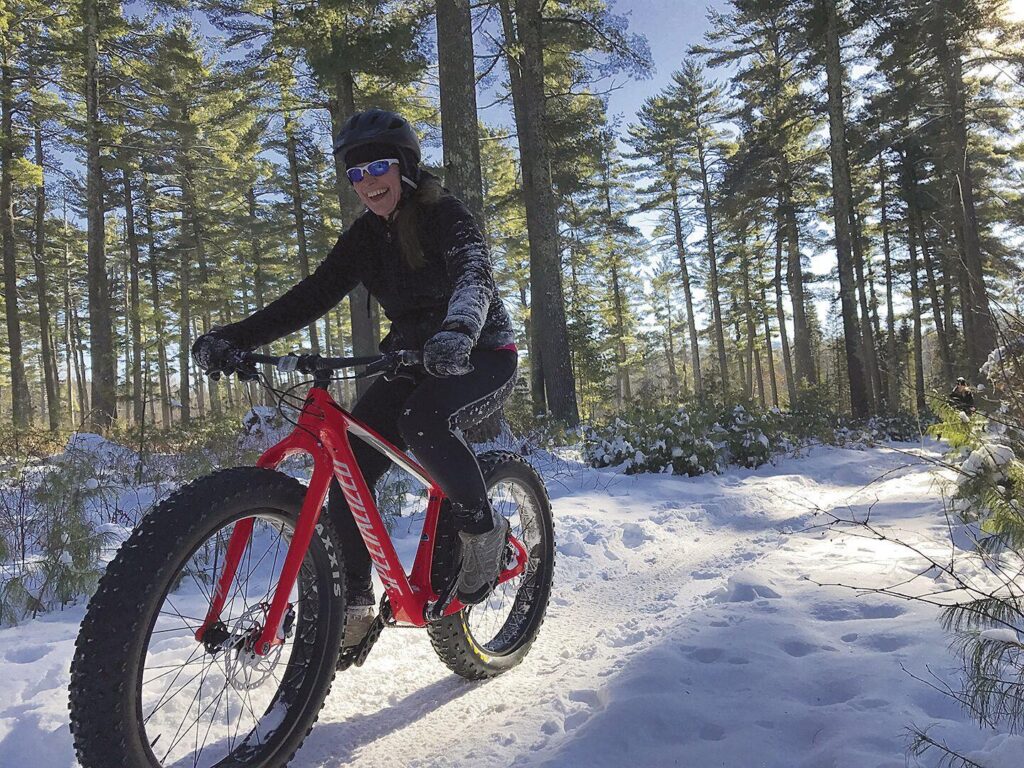
Did I mention the grooming? Fat bike clubs have reworked the trails over the years to allow for bigger and better grooming equipment. Trails are now often 3 to 4 FEET wide!!! Uphills are conquered by all abilities. Sharp corners are fast and fun! And, of course, smiles still abound.
The point of this little history lesson is to show that, thanks to the early pioneers of fat biking, you are living in the golden age of fat biking! This also reaffirms that trail grooming is a critical part of fat biking success and enjoyment, so do your part – know, respect, and live fat bike trail etiquette!
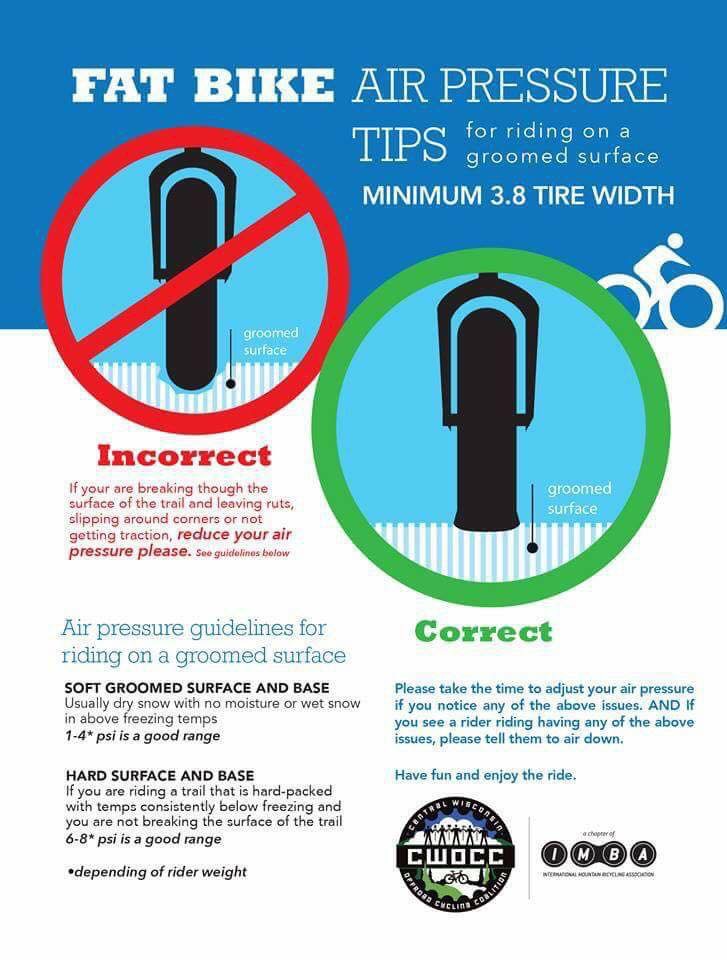
1. Ride correct tire pressure: 3-4 PSI for soft snow, seriously. If your tire breaks the trail surface and leaves a rut, lower your pressure. On the softest trails, 2-3 psi may be necessary. Only on the firmest trails do we run above 6-7 psi, usually in the late winter after freeze-thaw conditions. Get a low pressure tire gauge.
2. Allow freshly groomed trails to set up: It may take overnight for the snow to “set”. A few riders can ruin hours of grooming effort in minutes. Consider a cruise on the backroads while we let the grooming firm up.
3. Craters and footprints: Yard sales still happen with a knee or elbow plant leaving a void right in the trail. And there’s always that one uphill that leaves you on foot, pushing your ride up the hill. This is a simple one. Fill your crash craters and PLEASE walk on the side of that trail if you are off your bike.
These three things will keep your fellow fat bikers and, VERY IMPORTANTLY, your hard-working trail groomers happy!
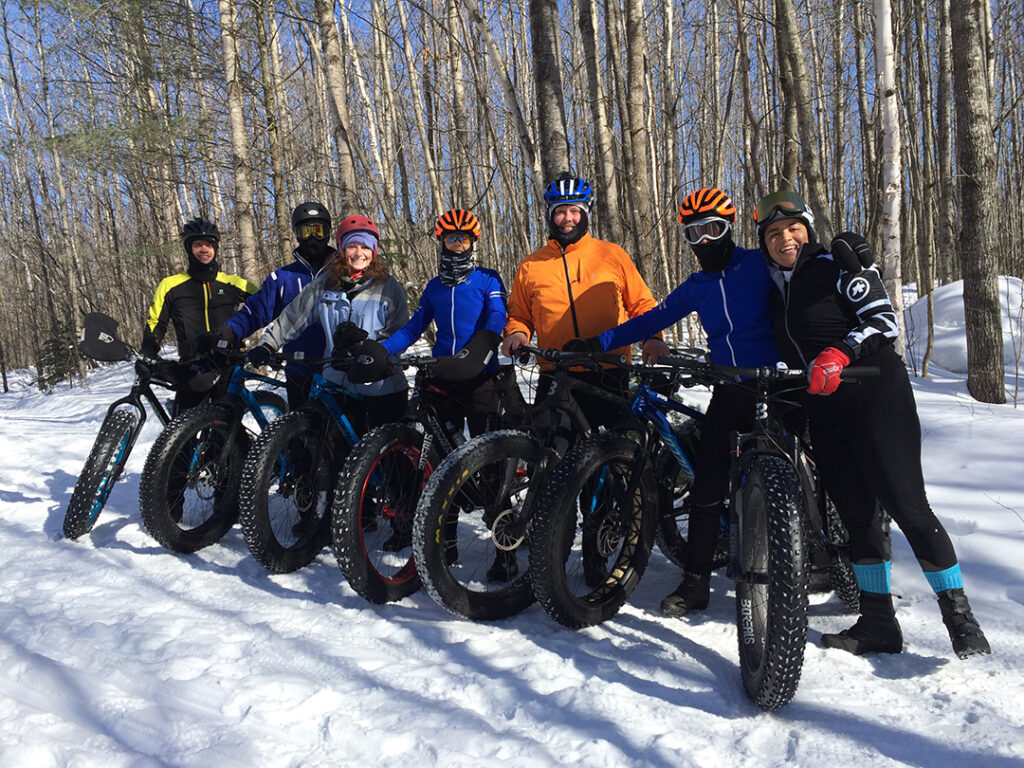
Now is the time to join us on the fat bike trails and hang out with some of the coolest people out there! New Moon is offering 20% off on our entire Fat Bike inventory-from the Rocky Mountain Blizzards to the Pivot Les Fat Pro XT. There’s more to winter than XC skiing-try the snowy trails on 2 wheels!

